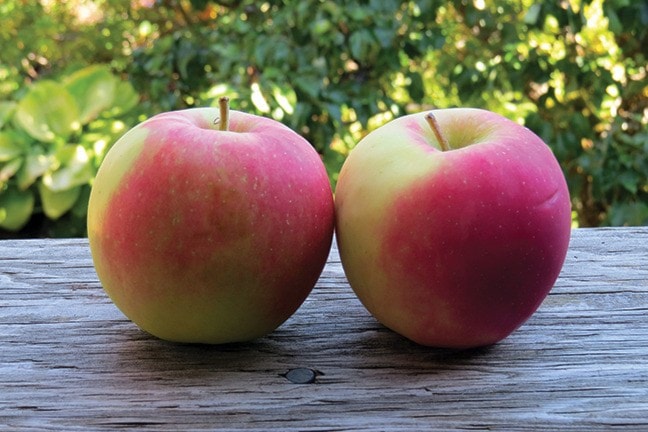Leslie Cox
Special to The Record
Calling all gardeners! I need your help!
I have been asked to contribute material for an upcoming gardening book. The content is focusing on new gardening challenges: new pests and diseases, old pests and diseases that are becoming more of a problem and, most importantly, how you – the gardener – are keeping up with these new climate challenges we are facing.
My author friend has asked me for information on these topics, and more, as they pertain to the Comox Valley. For instance, tracking the apple maggot – or Rhagoletis pomonella – which is a serious pest to our apple crops.
Doing some research, I discovered the first recording of the apple maggot in Canada was noted back in 1896. Back then, it mainly hung out in eastern Canada and the northeastern regions of the United States. But at some point this pest began a slow migration westward.
Various documents and publications noted the apple maggot’s appearance in Washington and Oregon states sometime around 1987 where it entrenched itself in local orchards for about 20 years. Then it started a northward migration, probably following the temperature flow much as some of our oceanic species are doing along the Pacific coastline.
Once again in Canada: the Nov. 16, 2005 edition of the Edmonton Journal reported a number of local homeowners in that region were discovering unsavoury invaders in their apple crops.
A year later, more reports: the apple maggot had been found in Abbotsford, the Fraser Valley, Vancouver, and parts of southern Vancouver Island. These new infestations had the B.C. Fruit Growers highly concerned.
Apple crops are a respectable industry in our province as we produce about one-quarter of the entire apple crop grown in Canada. And 91 per cent of those grown in B.C. are concentrated in the Thompson-Okanagan region - not that far from Abbotsford, as the crow flies.
The scare was enough for the Ministry of Agriculture to launch a public awareness campaign, warning gardeners about this pest and recommending prompt action in controlling any outbreaks in an attempt to control its spread.
But once again, the apple maggot has been on the move. One reader in the Comox Valley has recently informed me she found this pest in her early apples for the first time this year. Her suggestion of a future article on this pest came in at a very opportune time, I must say.
And more information about this pest will definitely be forthcoming in this space very soon. But in the meantime, to get back to my friend and her latest book project. I would really appreciate more information from other gardeners about any and all pests you have found in your gardens in the last couple of years. Pea weevils, thicker hordes of aphids, tomato fruitworm, powdery mildew on tomatoes. Because, simply put, what I find in my garden does not mean you have it in yours, and vice versa.
Besides pest and disease information, I also need to hear what plants and cultivars did better, or worse, this last summer given our extended drought period. Stunted broccoli, tomatoes suffering heat stroke, heat impact on pollination in the greenhouse.
And tell me how you managed through the strict watering restrictions. What did you do differently? (We bailed greywater.)
As you can see, my friend is serious in her quest to put together a book that will be helpful for all gardeners trying to grow a garden in today’s global climate change. And while her main focus is on fruits and vegetables, I, personally, am very interested in also hearing what is afflicting our ornamental and native plants.
So anything you can share would be a huge help! Please contact me at duchessofdirt@telus.net.
Leslie Cox co-owns Growing Concern Cottage Garden in Black Creek. Her website is at www.duchessofdirt.ca and her column appears every second Thursday in the Record.
